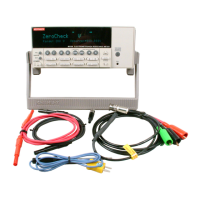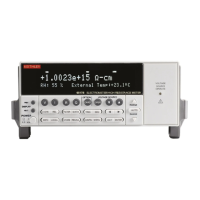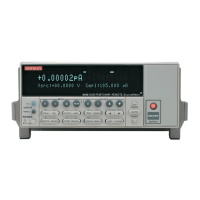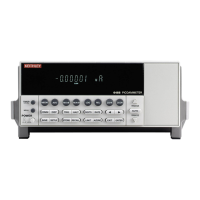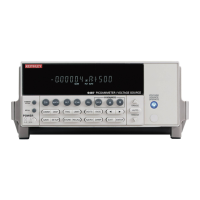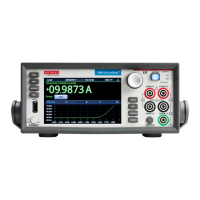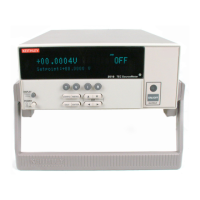8-4 Buffer
SCPI programming
Commands associated with buffer operation are listed in Table 8-1. The TRACe commands
are used to store and recall readings in the buffer. The FORMat:ELEMents command is used to
specify which data elements to include in the response message for TRACe:DATA? (which is
the command to read the buffer). The CALCulate3 commands are used to obtain statistics from
the buffer data.
NOTE The Model 6514 uses IEEE-754 floating point format for statistics calculations.
A) TRACe:FREE?
Two values, separated by commas, are returned. The first value indicates how many bytes of
memory are available, and the second value indicates how many bytes are reserved to store
readings.
Table 8-1
SCPI commands — buffer
Commands Description Default Ref
:TRACe TRACe Subsystem: See Note
:CLEar Clear readings from buffer.
:FREE? Query bytes available and bytes in use. A
:POINts <n> Specify number of readings to store; 1 to 2500. 100
:ACTual? Returns number of readings actually stored in buffer.
:FEED <name> Select source of readings; SENSe[1], CALCulate[1] or
CALCulate2.
SENS1 B
:CONTrol <name> Select buffer control mode; NEVer or NEXT. NEV C
:TSTamp Timestamp:
:FORMat <name> Select timestamp format; ABSolute or DELTa. ABS D
:DATA? Read all readings in buffer. E
:FORMat FORMat Subsystem: Sec
16
:ELEMents <list> Specify data elements for :TRACe:DATA? response
message; READing, TIME and STATus.
All 3 F
:CALCulate3 CALCulate3 Subsystem:
:FORMat <name> Select buffer statistic; MINimum, MAXimum, MEAN,
SDEViation or PKPK.
MEAN G
:DATA? Read the selected buffer statistic. H
Note: SYSTem:PRESet and *RST have no effect on :TRACe commands. The listed defaults are power-on defaults.
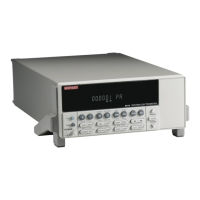
